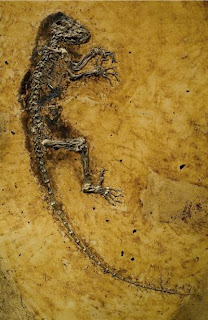There were two architects on our trip. When the platters were placed in the table, they exclaimed, “Mm, Mm, Mm, Southern Fried Chicken.”
I replied, “That is not chicken.”
They retorted, “How do you know?”
I replied, “The anatomy is wrong.”
They then asked, “Well, what is it then?”
I responded, “Pigeons, I’ve had them before. They’re delicious.”
Everyone who had the pigeons loved them.
The following morning we were off to Luxor. We took a bus ride across the desert.
The first thing we saw were the Colossi. There is a colossus on either side of the entrance of the Valley of the Kings. They stand 65 feet high.
We drove to the mortuary temple of Queen Hapchetsut the first female pharaoh.
I call her the first women’s libber.
From there , we proceed to King Tut’s Tomb.
When entering King Tut’s Tomb, the visitor walks down a flight of stairs.

At the bottom, there is a room with a open sarcophagus. Inside the sarcophagus, lies the coffin of King Tut and his golden mask.
The coffin is solid gold and, in1976, was worth 16 million dollars. As my readers know, its value as an antiquity is priceless.
There were elaborate paintings on the walls and scenes fro The Book of the Dead.
The Book of the Dead contains spells and is used in a pharaohs funeral.
Next, I shall discuss my trip to Abu Simbel near the Sudan border.
Stuffed Pigeon recipe :
Ingredients:
- 2 pigeons
- Salted water for boiling
- 2 medium onion
- 3 tbsp butter
- Salt and pepper
- ¼ tsp cardamom powder
- 1 cup grits
- Pigeons’ livers
Directions:
1- Clean pigeons and spice with salt, pepper and cardamom.
2- Prepare stuffing by washing grits then place it in a bowl and cover it with cold water. Leave it for an hour.
3- Drain grits well.
4- Chop 1 onion and pigeons’ livers into small pieces and add it to the drained grits.
5- Heat 2 tbsp of butter then add the grits mix to it and stir. Spice with salt and pepper. Leave for ten minutes over low heat.
6- Stuff the pigeons with grits and sow the openings so the stuffing won’t fall out.
7- Boil the salted water then add the stuffed pigeons. Lower the heat.
8- Add the other onion and cover until the pigeons are done.
9- Drain pigeons off the water and leave it aside until it cools a little.
10- Heat the rest of the butter and fry all sides of the pigeons.
11- Serve on chopped parsley. Served with
Egyptian Rice and another dish like
Molokhia.
Egyptian recipes.net.









 I was so excited about going to Egypt that I could barely sleep at night in the days before the trip began.
I was so excited about going to Egypt that I could barely sleep at night in the days before the trip began.
















